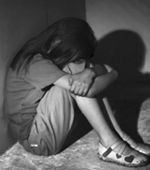 Commentary on the ACE (Adverse Childhood Experience) Study by Betsy McAlister Groves, MSW, LICSW
Commentary on the ACE (Adverse Childhood Experience) Study by Betsy McAlister Groves, MSW, LICSW
The Adverse Childhood Experiences (ACE) Study, authored in 2001 by Vincent Felitti, Robert Anda, Dale Nordenberg, et al, is important research, both because of the large cohort that was studied (drawn from a non-clinical sample of 30,000 members of the Kaiser Health Plan) and for its findings of a strong relationship between risk factors established in childhood and medical problems in later life.
The ACE Study compared the current adult health status of these many thousands of participants to seven categories of adverse childhood experience. Three categories were of personal abuse: recurrent physical abuse, recurrent emotional abuse, and sexual abuse. Four were categories of household dysfunction: growing up in a household with an alcoholic or a drug user; where someone was imprisoned; where someone was chronically depressed, mentally ill, or suicidal; and where the mother was treated violently.
The researchers demonstrate the synergistic effect of these risk factors. Exposure to one adverse experience carries modest risk for adult health problems; exposure to four or more experiences carries a two-four-fold increase in smoking and poor self-rated health, and 8-12 times the risk of alcoholism, depression and drug abuse. In addition, these risk factors often cluster in individuals: if a person had exposure to one experience, there is an 80% chance of exposure to another risk factor.
Of particular interest to those who work with families affected by domestic violence is the inclusion of exposure to violence against mother as one of the seven adverse experiences investigated. The study yields important data about the prevalence of childhood exposure to domestic violence and about the association of exposure to domestic violence with other risk factors for children. As we know a child’s exposure to domestic violence is highly correlated with direct physical abuse of the child, another factor included in Dr. Felitti’s study. In his study, 12.5% of respondents indicated childhood exposure to domestic violence and 10.8% indicated a history of child abuse.
The study also underscores the longer-term consequences of exposure to domestic violence and adult health and well-being. It reminds us that there are both direct and indirect victims of domestic violence: children suffer as the hidden victims of violence against women. It also reinforces what many advocates and survivors know all too well: children’s exposure to violence reverberates into adult life.
Implications for the Field
The ACE study suggests several priorities for policy and practice. First, we should redouble our efforts at primary prevention of violence against women. The benefits of preventing domestic violence are obvious for women and for the future health and well-being of their children.
Efforts to provide education to teenagers about healthy relationships, to raise awareness of the issue, to engage communities in addressing violence against women, to hold perpetrators accountable for the violence are of paramount importance and should be a priority in funding. Indeed, Felitti’s study helps to frame the challenge of prevention in public health and mental health terms that broaden the base of professionals who should engage in prevention efforts.
Second, we must develop strategies for early identification of and support for children who are exposed to domestic violence. As with any of the adverse child experiences cited in Felitti’s study, early identification has the potential to be early intervention, thereby decreasing the risk of adverse health outcomes in adult life. Health care systems are an important setting for such screening and response. The results of the ACE study make a strong case for the importance of screening and responding to children in pediatric practices.